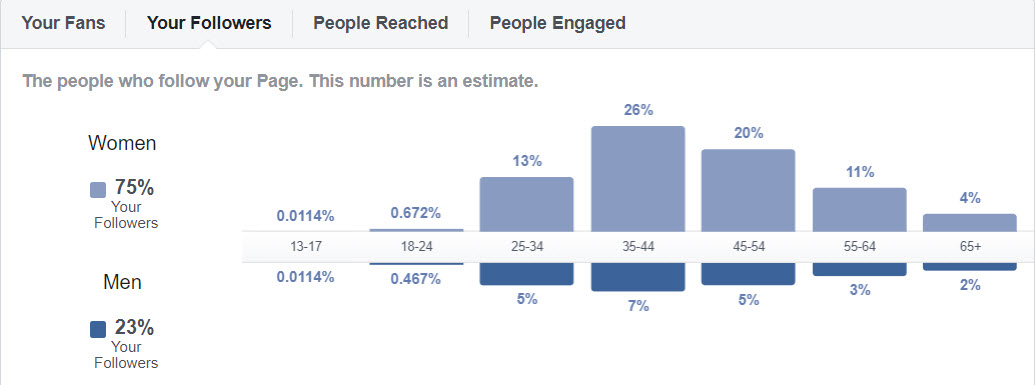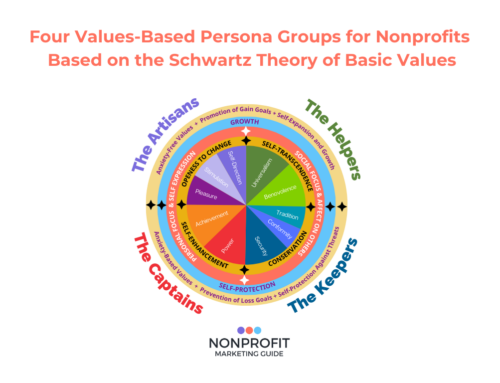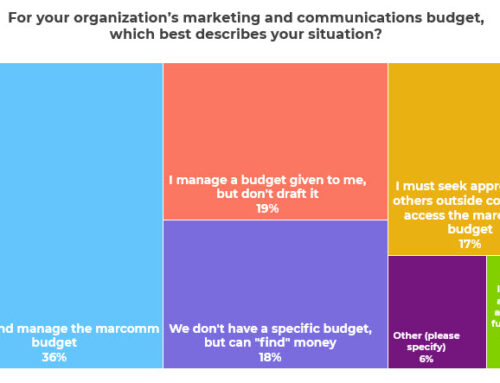Let’s say you started a new nonprofit communications job. They have all the usual channels set up and your job is to improve engagement.
The first rule of creating engaging content is to know WHO you are trying to engage. Who are the people seeing your content and what do they care about? What are their problems and concerns? What characteristics do they share?
In email marketing, it’s easy to create segments based on users’ activity, such as whether they open or click on your emails. You can even track the topics they are most interested in and other data about them in their record if you have a decent CRM (your database of people).
But what about your current social media followers? You don’t get the same kind of data back on a person by person basis from the social media companies. Segmenting to your organic social media followers is also limited. On Facebook, for example, Pages can share posts to “Top Fans” only or limit by a few demographics such as location, age, and some interests. You get more choices when you spend ad money. But you cannot categorize, segment, and target people directly the same way that you can in email.
That means it’s even more important to have a sense of the kinds of people who are currently following you on social.
Here are some relatively easy and affordable ways to learn about your current followers.
Look at the Audience Insights for Each Platform
Each social media platform supplies basic demographic data to you under either an Analytics or Insights tab or tool.

The advertising tools within each platform typically give you more details. For example, if you go to https://www.facebook.com/ads/audience-insights/people and analyze people connected to your page, you’ll get more details than the info than what’s under Insights > People. You can see relationship status, education level, which other Pages they like the most, location by city, how frequently they use Facebook, and on what kind of device.
Go to each platform and see what you find. Then compare them. Do you see patterns or trends, such as one gender or age group following you on one channel more than another? Do you see anything interesting related to buying behavior or other demographic data provided?
Track Which Topics or Post Types Get the Best Engagement
Sometimes you can deduce who your followers are based on the type of content that gets the most engagement. It’s definitely imperfect, but you may find for example, that people seem to prefer “basic” content compared to more “sophisticated” content (or vice versa). From that, you could deduce that your social followers are new to your work or issue if they like the basic content more. Or they might be more experienced if they like the more expert content.
Or you may see that certain topics or types of posts get much more interest. Do posts about using your services get more engagement or do posts about the results of your work get more engagement? The first might indicate that participants in your programs are following you, while the second might indicate donors are following you. Combined with other information you have from operating your programs and services or meeting your donors at events, you may be able to use that information to make some guesses about the type of people who are following you on social.
Analyze What Your Most Engaged Fans Post and Follow
This only works on more public platforms (i.e. Twitter and Instagram rather than Facebook). You can watch who likes or comments on your posts. Click on their accounts and see the type of content they post and who else they follow. See what kinds of hashtags they use and what kind of style they write in.
Survey or Poll Them
You can create a survey in your favorite survey tool and then share it on social media. Use a unique link for each social media platform so that you can sort the survey results by which social media platform they came from. Keep these short and focus on the few questions that are most important to you.
Where available, you can also use simple polling features built into the platforms. For example, you can use Stories Polls on Instagram to ask for preferences and interests.
Track Their Website Behavior
This gets more complicated, but if you are already paying for ads to send traffic to your website, then you’ve likely installed the tracking codes (called a tag on Twitter and a pixel on Facebook) from the social media platforms on your website. You can then create custom audiences or groups of customers on the social media sites based on which specific pages they have visited on your website. Again, you are connecting some rather loose dots here, but it’s better than nothing. For example, if you find that many of your Twitter followers have visited your web pages created for donors versus pages more often used by your program participants, you could reasonably assume donors are following you on Twitter.
I hope this list will get you started on better understanding who your current followers are!





